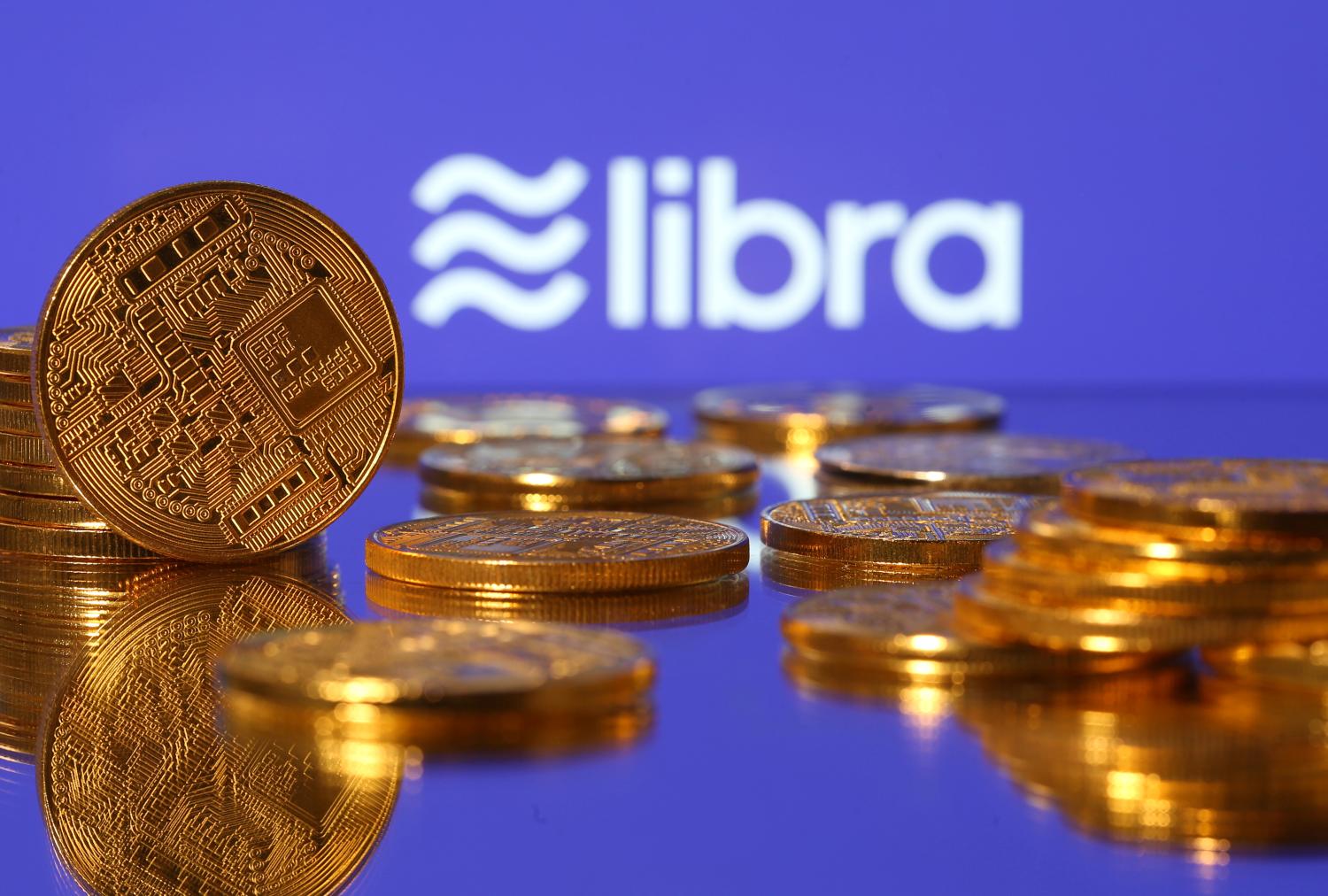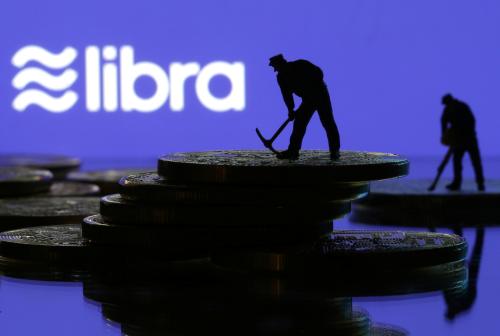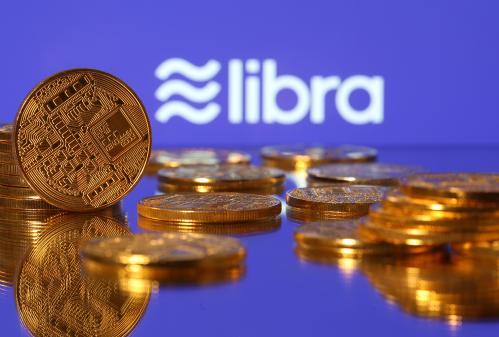Almost a year ago, Facebook announced it would create a global digital currency called “Libra” in order to help the billions of people around the world who lacked access to basic financial services. The currency would be a “stablecoin” backed by a basket of sovereign currencies such as the dollar, the euro and the yen. The proposal provoked widespread skepticism about Mark Zuckerberg’s motives—surely financial inclusion was just a veil for data collection ambitions—as well as criticism that Libra would undermine the U.S. dollar and cause all sorts of other problems. But the proposal also prompted a number of central banks to initiate or speed up research on the possibility of official digital currencies.
Because the proposal was recently significantly modified, and because China has now begun testing its central bank digital currency, it is a good time to reconsider the proposal and to examine whether public or private digital currencies can help improve access to financial services. I preview my conclusions in the introduction, which are that we should create a reasonable regulatory framework under which Libra can operate. The competition in payments is a good thing, and Libra may have some positive benefits for financial inclusion.
The New and Improved Libra
In the first section of the paper, I discuss the changes to the original proposal and the extent to which they address the criticisms of the idea. The biggest change is that the proposal now contemplates a series of digital stablecoins, each backed by a single sovereign currency, such as the U.S. dollar, rather than a single stablecoin backed by a basket of currencies. The concept of a multicurrency stablecoin is still present but only as a “digital composite of some of the single currency stablecoins available on the Libra network.” This change addresses many of the practical problems in the original proposal and it should make Libra easier to use. It also could be seen as a scaling back of Facebook’s ambitions, for the proposal is now more like a PayPal with a different technological backbone than a competitor to sovereign currencies. While this may disappoint some crypto enthusiasts, it should reduce concerns about Libra undermining sovereign currencies or interfering with the execution of a central bank’s monetary policy.
The second change is enhanced compliance procedures to address concerns that the network could be used for money laundering and financing illicit activity. The revised proposal says some aspects of compliance will be built into the system itself and will be automated; it also sets forth diligence and screening procedures that were absent from the original proposal. But whether these are sufficient will depend on the details.
The third change is greater detail on how the Libra Association will protect the reserve of sovereign currencies that it receives in exchange for issuing Libra stablecoins, which addresses safety and soundness concerns. Finally, the original idea of transitioning within five years from a “permissioned” blockchain system to a “permissionless” system has been jettisoned.
All of these changes are improvements, but they do not address all the criticisms that were made. In particular, the changes are unlikely to persuade those who disliked the proposal because of its creator, Facebook. Many have voiced concerns about Facebook’s power, its past record on privacy, and its potential ability to use or misuse the data generated by Libra.
I focus on the wide range of regulatory concerns raised by the proposal—which include prudential, consumer protection, and privacy issues. I discuss the challenge of creating the proper regulatory framework, particularly because the United States has a fragmented financial regulatory system involving several different agencies, and the Libra proposal cuts across their several jurisdictions. I consider whether the Financial Stability Oversight Council could help address that problem. Ultimately, I suggest that our individual financial regulators need to work with Swiss authorities, where the Libra Association is incorporated, as well as regulators in other jurisdictions to design the proper framework. With respect to privacy and use of data issues, and the power of large digital platforms like Libra generally, these concerns raise much broader issues than Libra, and require a comprehensive approach that is beyond the jurisdiction of financial regulators. I also discuss the challenge the Libra Association will face in the implementation of financial sanctions: will it follow United States policy even if that conflicts with its ambition to be a global platform?
Libra and Financial Inclusion
The second part of the paper examines whether Libra can achieve its goal of improving access to financial services. The problem is significant not just in developing countries but also in the United States, where almost a quarter of the population is unbanked or underbanked. They spend 10% of their income just to use their income.
Whether Libra can succeed in this respect will depend on a number of factors, such as whether it is easy to cross the “cash/digital divide”—meaning is it easy and inexpensive to obtain and use Libra. The robustness of the network—is it used widely by those whom the underserved must typically pay—will also be a significant determinant. Whether ancillary services such as small amounts of credit are offered may also influence usage.
The United States has a variety of relatively fast, easy-to-use payment options that are inexpensive or free to the consumer, and some provide financial benefits to consumers (free 30 day revolving credit on a credit card if you pay your monthly bill, for example, though we of course pay for that indirectly because of the fees that merchants are charged). It may be very challenging for Libra and the digital wallets that provide services to get people in countries with highly developed financial systems to use a new system.
While I am not an expert on financial inclusion and the paper is not a comprehensive look at the question, I also briefly consider the merits of other proposals that are currently discussed to address the needs of those underserved by the system, such as by moving to a truly “real-time”payments system, the Federal Reserve’s FedNow project, the FDIC’s Safe Account project, and the revival of postal banking.
Nevertheless if Libra succeeds only in reducing the cost of global remittances, that would be of great benefit to lower-income people around the world, including in the United States. Global remittances were over $700 billion in 2019, with about 10% of that amount being sent from the United States.
The Value of Chinese Lessons
The third section examines the dramatic growth of the Chinese third-party mobile payments industry. I consider whether the reasons for its success are relevant to Libra’s potential and what we can learn from the Chinese government’s regulatory response to the industry. Third party mobile payments grew from around $20 billion in 2012 to $35 trillion in 2019, largely because of two companies, Alipay (affiliated with the e commerce giant Alibaba) and WeChat Pay (part of the social media enterprise, WeChat). Their growth contributed significantly to financial inclusion in China.
The competitive landscape facing these companies was quite different from what Libra will face in the United States and other countries with highly developed financial systems. Cash was the primary means of retail payment at the time when the China third party mobile payments industry started to grow significantly. The United States has a variety of payment alternatives which work especially well for those above the lower rungs of the income ladder and which will mean Libra faces much tougher competition.
Nevertheless, the experience of China suggests that consumers may adapt quickly to a new technology that offers greater convenience and savings. The Chinese companies made it easy for consumers to cross the cash/digital divide. They created robust networks and offered a variety of ancillary services. These included money market funds which allowed consumers to easily transfer funds from a savings product to their payment account.
Chinese authorities took a number of steps to address the risks posed by a huge shift of funds from traditionally regulated banks to these new enterprises. The combination of prudential measures, consumer protection measures and other steps are similar to what regulators will need to create to oversee Libra.
Will a Proposal for a Private Digital Currency Lead to Public Digital Currencies
The most significant consequence of the Libra proposal to date has been to accelerate work on the development of central bank digital currencies (CBDC), and I examine this briefly in the fourth part of the paper. Many nations are now exploring the idea. Officials in many countries, including Chairman Powell of the Federal Reserve, have acknowledged that Libra has had an effect on this work.
But the case for CBDCs is a mixed one. A so-called “wholesale CBDC”—available only to financial or other large institutions—might represent an improvement of existing electronic payment systems but is unlikely to significantly change how most of us use money, unless a broad swath of institutions are included. But in that respect, it seems quite similar to the initiative the Federal Reserve has already launched, called FedNow, to move the banking system closer to real-time payments. A retail CBDC might increase financial inclusion and might bring faster payments, but it also creates a risk of disintermediating the traditional banking system. That could have adverse effects on credit creation and on financial stability.
China is the first major country to begin testing a CBDC. It seems that its primary purpose is not for financial inclusion or efficiency gains, but rather as a part of its efforts to make the RMB a more significant international currency. China as well as some European officials also see the development of CBDCs as a means to reduce the dominance of the U.S. dollar in international payments.
To date, the Federal Reserve has acknowledged the importance of studying the CBDC issue but has not disclosed any plans to develop or test its own version. It is focused instead on its FedNow project to improve efficiency of payments.
My own view is that while there are many reasons for the United States not to be a first mover when it comes to CBDCs, we should be actively studying the issue and considering options, particularly because the actions of other countries could force us to act.
Conclusion
We face decisions with respect to the Libra proposal, since the Libra Association is currently seeking approval from Swiss regulators to launch its service. And while there may be other ways to improve access to financial services, the fact is this innovation could lead to some improvements in payments and stimulate competition.
That is why we should create a reasonable regulatory framework to manage the potential risks of the proposal and allow it to go forward. That means addressing prudential and financial stability concerns, consumer protection issues, money laundering and illicit activity prevention, as well as privacy and use of data issues. Our various financial regulators will need to collaborate with one another and with their international counterparts to stitch together the proper approach. But that is a worthwhile undertaking, because innovation of this type can be a beneficial force. And surely when it comes to access to financial services, we can do better.
The author did not receive any financial support from any firm or person for this article or from any firm or person with a financial or political interest in this article. He is currently not an officer, director, or board member of any organization with an interest in this article.
The Brookings Institution is a nonprofit organization devoted to independent research and policy solutions. Its mission is to conduct high-quality, independent research and, based on that research, to provide innovative, practical recommendations for policymakers and the public. The conclusions and recommendations of any Brookings publication are solely those of its author(s), and do not reflect the views of the Institution, its management, or its other scholars.
Facebook provides support to The Brookings Institution. The findings, interpretations, and conclusions in this report are not influenced by any donation. Brookings recognizes that the value it provides is in its absolute commitment to quality, independence, and impact. Activities supported by its donors reflect this commitment.
The Brookings Institution is committed to quality, independence, and impact.
We are supported by a diverse array of funders. In line with our values and policies, each Brookings publication represents the sole views of its author(s).








